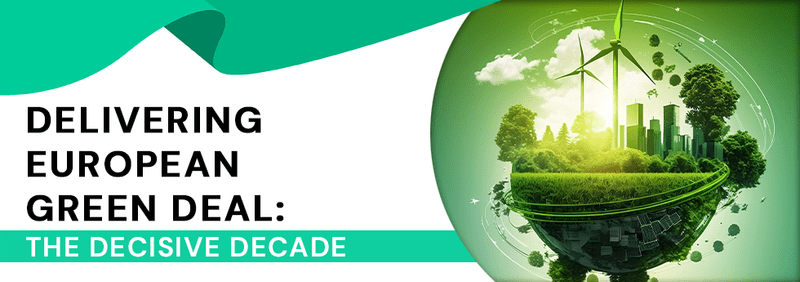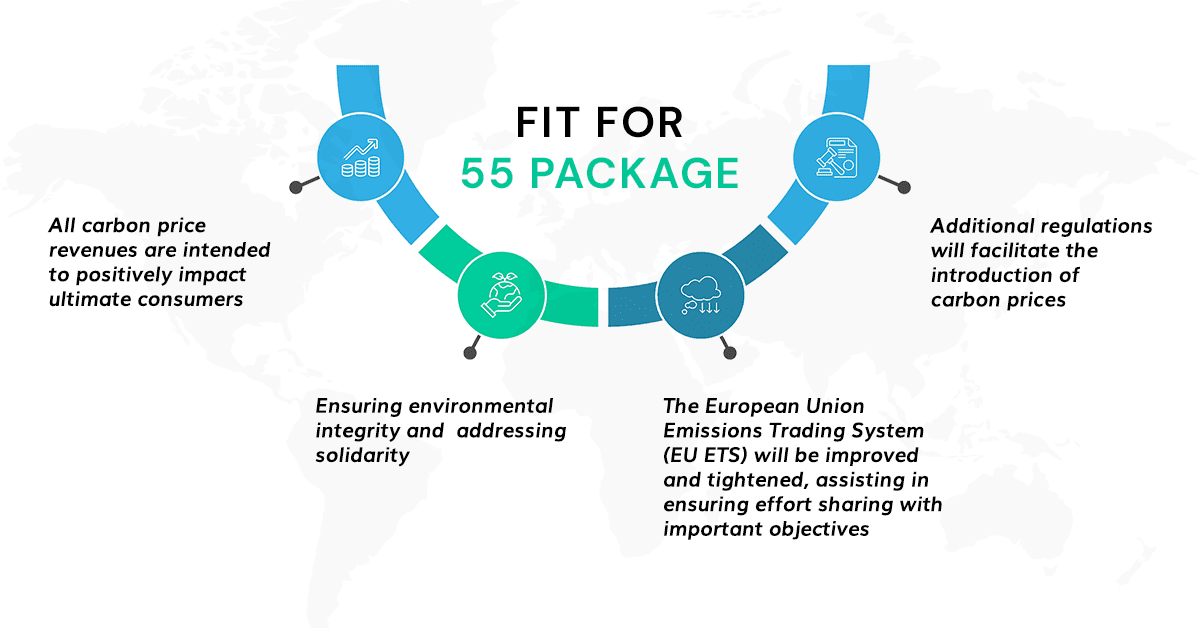The climate and environmental degradation caused by human activities worldwide have brought our planet close to the verge of an existential crisis. Thus, addressing these challenges demands a united effort and buy-in from every individual. In this view, ‘The European- Green Deal’ has emerged as a significant attempt to embrace more ecologically friendly practices in Europe at a scale that can impact both present and future generations.
To begin with, let’s get to know the “Green Deal” in more detail.
Table of Contents
ToggleWhat is the ‘European Green Deal’?
The Green Deal, often known as the EU Green Deal, is a plan for making the economy of the European Union sustainable. It was unveiled on 11 December 2019 by Ursula von der Leyen, President of the European Commission.
This bold strategy for addressing climate change has a final objective for Europe to achieve carbon neutrality by 2050. The European Green Deal intends to increase resource efficiency, curb climate change, stop biodiversity loss, and minimize pollution by switching to a clean, circular economy. It describes achieving an equitable and inclusive transition, sketches the investments required, and lists the available financing tools.
All economic sectors are included in the European Union Green Deal, including those related to transportation, energy, agriculture, construction, and industries including steel, cement, ICT, textiles, and chemicals.
What is the goal of the European Green Deal?
The European Green Deal outlines a strategic roadmap with milestones emphasizing political efforts for green energy and environmental revolution. The following objectives are part of its strategy, which have the complete backing of the governments of Germany, France, and Spain:
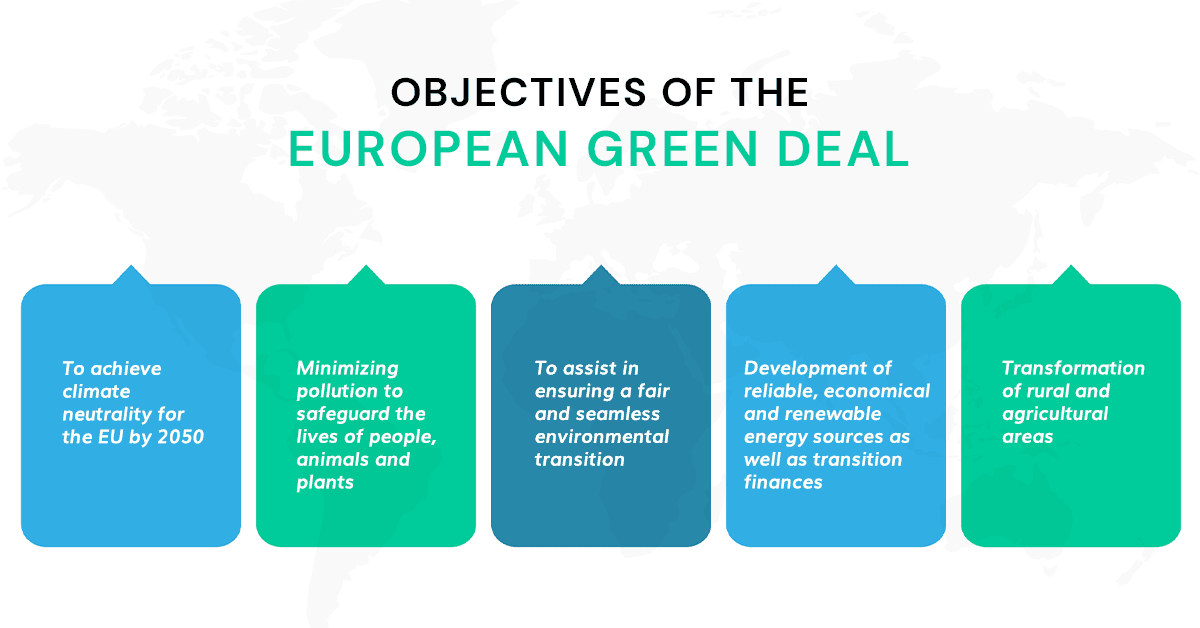
Proposals and policies of the European Green Deal
The European Green New Deal includes a wide range of initiatives that support using renewable energy resources, advance transport sustainability, and lead the way toward a sustainable, productive, and circular industrial model. Following are the main proposals and policies put forward as part of this extensive deal:
1. Climate action

As previously stated, the primary goal of the Europe Green Deal is to design the path for the EU to achieve climate neutrality by 2050. This change can be slow since it would have disastrous repercussions. As a result, the EU Commission has established milestones such as the 2030 climate objectives, which call for a 55% decrease in greenhouse gas emissions compared to 1990 levels. This is part of the “Fit for 55” package, a set of legislative measures from several industries to revise the current European carbon Law to reflect the EU Green Deal’s carbon neutrality goal.
The key goals of the “European green deal Fit for 55” package are:
2. Clean Energy
Energy production and consumption account for 80% of the EU’s overall greenhouse gas emissions. Hence there is a pressing need to switch to cleaner energy.
The Clean Energy policy seeks to minimize this statistic by establishing a power industry based mostly on renewable sources, and an integrated, networked, and digitalized EU energy market.
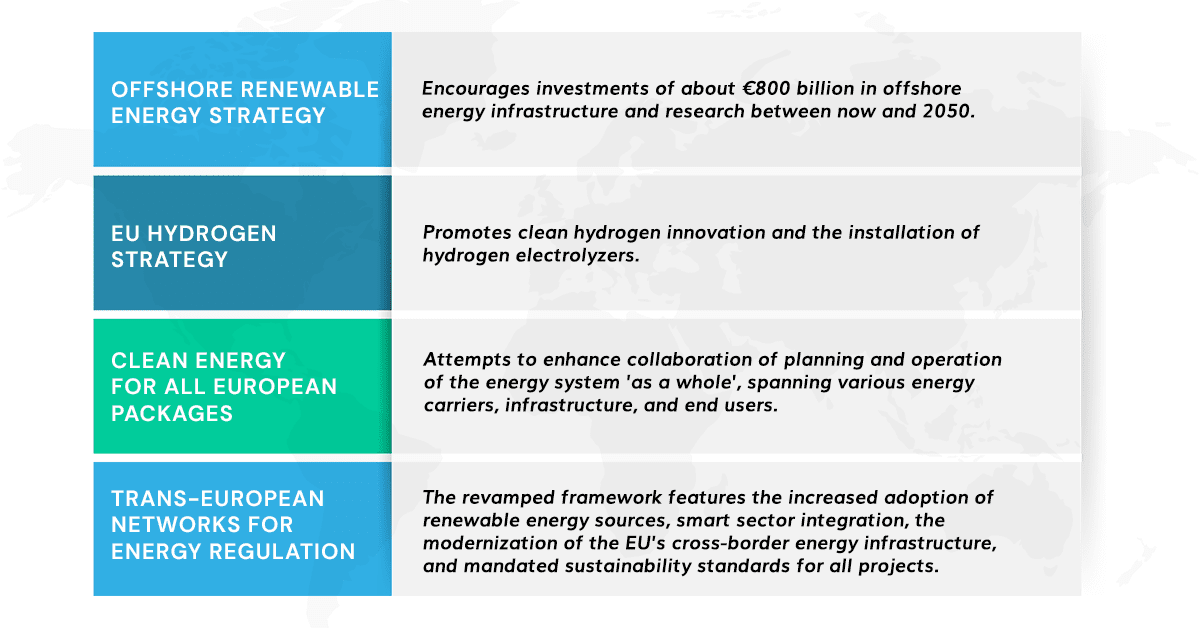
3. Sustainable Industry
The industrial sector emits 26% of the greenhouse gases in the European region. As a result, the European green deal could only be complete with a strategy to decarbonize the industrial sector and make it more sustainable.
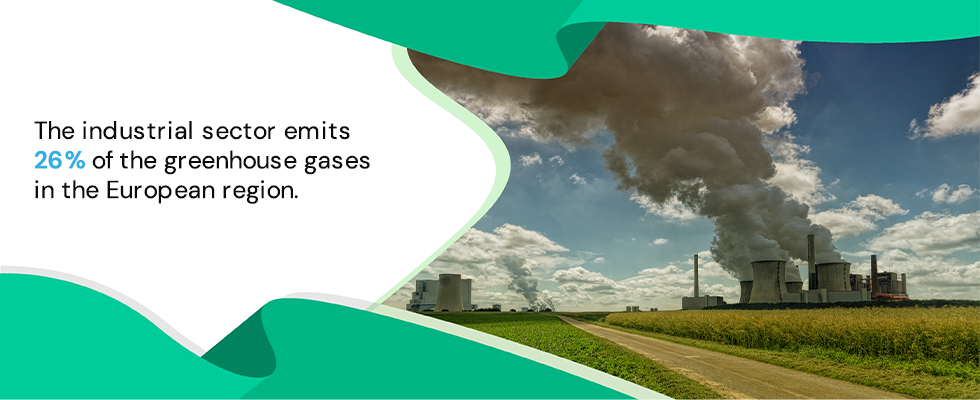
The EU Green Deal contains measures to support the decarbonization efforts, ranging from product sustainability to the availability of raw resources:
- Circular Economy Action Plan: The European Green Deal’s fundamental building block, the circular economy, seeks to alter every phase of the product life cycle to extend its shelf life and protect natural resources. Furthermore, the circular economy’s guiding principles concentrate on increasing product reusability ,reparability and the continued use of recyclable materials.
- European Industrial Strategy: The EU Industrial Strategy aims to accelerate digital transformation, employ alternative and cleaner energy sources, establish recycling goals, and decrease the industry’s carbon footprints.
4. Buildings & Renovations

In Europe, buildings utilize around 40% of the country’s energy, producing 36% of the continent’s total greenhouse gas emissions. Because of this, the European Green Deal aims to modernize the building industry to make it more environmentally friendly and double renovation prices to produce more energy-efficient buildings.
- Renovation Wave: The Renovation Wave is a building renovation approach that aims to boost energy efficiency. It emphasizes decarbonizing heating and cooling, addressing the worst-performing building stock and renovating public buildings like schools and hospitals.
- Construction Products Regulation: The Construction Products Regulation, which establishes standards for building materials in the Internal Market, is also under revision by the EU Commission. Promoting environmental objectives and product safety could result from the reformed rule.
5. Sustainable Mobility
Transport contributes 25% of Europe’s greenhouse gas (GHG) emissions, and this percentage is rising as demand increases. By 2050, the European Green Deal for Sustainable Mobility aims to drastically cut those emissions by 90% using intelligent, easily accessible, and reasonably priced transport. More environmentally friendly transportation methods will decrease traffic congestion and general pollution in cities. The strategy establishes a variety of milestones for 2030, including:
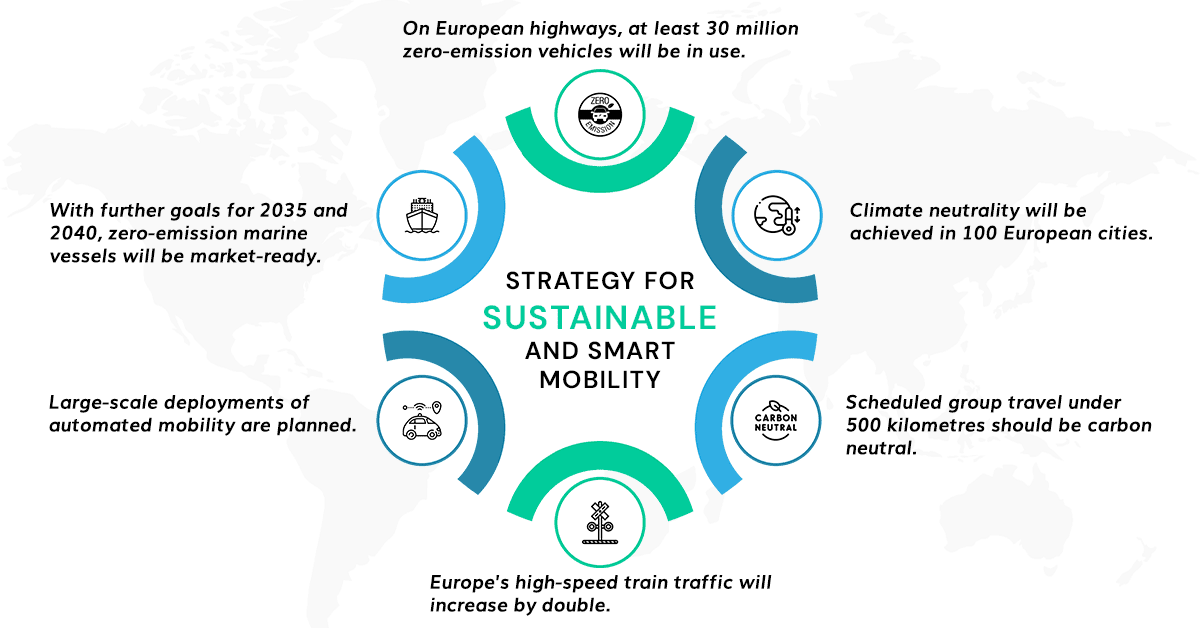
6. Elimination of pollution
The European Union is more equipped than ever to combat pollution with the approval of the Zero Pollution Action Plan, a significant European Green Deal deliverable. Three main steps are further broken down into this activity to stop pollution. The first is the chemical strategy for sustainability, which aims to safeguard people and the environment from harmful chemicals. Second, the Zero Pollution Action Plan for Water, Air, and Soilseeks to avoid, correct, monitor, and report pollution. As a last step towards realizing the EU Green Deal goal, measures to reduce pollution from big industrial sites will be revised to ensure they comply with policies related to climate, energy, and the circular economy.
7. Maintaining biodiversity
Human activities destroyed an estimated 60% of the world’s overall biodiversity in the past 40 years. As extreme weather events hasten the demise of the natural world, biodiversity loss is inextricably related to climate change.
The goal of the Biodiversity Strategy for 2030 is to strengthen the capacity of our societies to withstand risks including food shortages, disease outbreaks, climate change, and forest fires. Building a system of protected areas on land and at sea, starting an EU nature restoration plan for restoring damaged ecosystems, bringing funding for biodiversity and improving the governance framework, and launching initiatives to address the global biodiversity challenge are some of the initiatives planned for biodiversity recovery.
8. Farm-to-Fork
The Green Deal includes the ‘Farm to Fork’ concept, which combines ecological and economic assistance for European farmers and fishers. The strategy contains goals such as attaining 25% organic farming by 2030, lowering pesticide and fertilizer usage by 50% and 20% by 2030, and implementing labels that indicate the level of sustainability of products.
What are the benefits of the EU-Green Deal?
The Green Deal’s primary objective is to reduce greenhouse gas emissions and stop global warming. Still, there are several advantages for the European countries, its economies, and its population that will result from its implementation as well:
- Less pollution will result in cleaner air, water, and soil.
- Improved food security, including more healthy and high-quality food options as well as enough food resources for everyone.
- The growth of public transit and non-polluting modes of transport will make cities more habitable for living.
- This will aid in reducing the reliance on fossil fuels and the associated geopolitical problems.
- Finally, and most importantly, if Europe succeeds in setting the standard for “green” technology, there will be economic development, jobs, and improved prospects for the future generation.
Importance of Sustainable Procurement in the European Green Deal
As discussed above, the Green new deal European policies widened the parameters and set new standards for a sustainable European Union economy. Businesses will need to make major adjustments to secure the sustainability of their supply networks. As a result, dealing with them can provide complex issues for companies, particularly those that require more supply chain sustainability measures.
However, by implementing a sustainable procurement strategy, organizations may conform to European Green Deal policies while continuing to achieve their business objectives. It can help organizations get the most out of their suppliers by applying sourcing strategy in supply chain management and using sourcing tools for procurement to decrease the social, environmental, and economic impact of an organization’s business operations.
To promote sustainable procurement, some of the important procurement methods have also evolved that can help with the adoption of the European Commission Green Deal:
- Supplier discovery: With advanced material requirements, complex regulatory requirements, and increasing sustainability demands, procurement organizations are constantly looking for new potential suppliers who can assist them with driving sustainability goals. Some include renewable energy adoption, improved waste disposal, and zero-carbon transportation.
- Sourcing: During the procurement and selection process, businesses adopt a supplier sourcing strategy that necessitates suppliers to adhere to sustainability standards, including ethical governance, respect for workers’ rights, and environmentally friendly practices. To control their spending on non-sustainable products and significantly lower their carbon footprint, organizations require suppliers to provide insights into plastic usage in their catalog items and push for paperless, digital invoices from suppliers as an element of the procure-to-pay process.
- Risk management: Businesses may identify sustainability risks, keep track of audit results, and work with suppliers to address non-conformities using supplier risk management. Large organizations are extending their assistance in educating and supporting their suppliers with necessary strategic sourcing and procurement tools and technology to manage supplier risks and achieve sustainability.
Conclusion
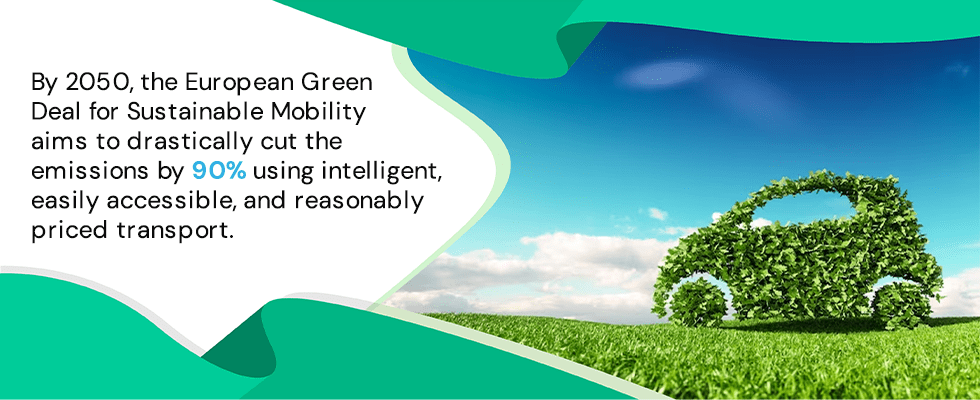
The journey to 2050 is still far off and will probably include more challenging negotiations and unexpected course modifications. However, the European Green Deal is already in motion with legally enforceable objectives and continues to be the most thorough and determined plan of action for a sustainable economy established by a developed nation to date.
Schedule an appointment with our MeRLIN Sourcing expert to see how our strategic sourcing solution may assist you in complying with the new European Green Deal.

